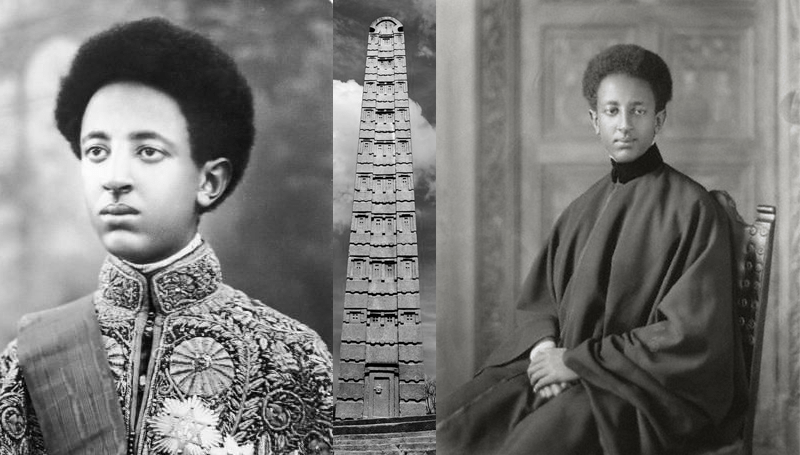According to historians, he was proclaimed Emperor of Ethiopia three times. While in exile, the first occurred in 1960, the second in 1975, and the third in 1989. Amha Selassie was born Asfaw Wossen Tafari in Harar, Ethiopia, in August 1916, to Dejazmach Tafari Makonnen (later Emperor Haile Selassie) and his wife, Menen Asfaw. He is regarded as Ethiopia’s final emperor. On November 2, 1930, his father was crowned Emperor of Ethiopia, and he became Crown Prince Asfaw Wossen of Ethiopia.
Amha Selassie was educated by a tutor at the palace as a child and then enrolled in Teferi Makonnen School before completing his education at Liverpool University in the United Kingdom, where he earned a bachelor’s degree in Political Science and Public Administration. He had two wives, the first of whom was Princess Wolete Israel, with whom he had a daughter. Princess Medferiash Work Abebe was his second wife, and they had four children together.
Amha Selassie was a dedicated Crown Prince and successor to the throne who never shied away from his responsibilities. According to author Gregory Copley in his book “Ethiopia Reaches Her Hand Unto God: Imperial Ethiopia’s Unique Symbols, Structures, and Role in the Modern World,” he also served his country as governor of the provinces of Begémdir, Tigré, and Wollo at various times, leading various development projects such as the construction of hospitals, schools, and orphanages, as well as the construction of roads.
Amha Selassie also served on the Crown Council, often as President in the Emperor’s absence, and as Chairman of the Ethiopian Red Cross, according to Copley.
“During the battle against Italian occupation (1935-1941), the young Crown Prince served as the Emperor’s right-hand man in every foreign diplomatic effort aimed at obtaining material and moral support for the resistance. He was leading his own forces in war at the age of 20. Crown Prince Asfa Wossen and his father “managed the resistance from Jerusalem, and subsequently from a residence in Bath, England, for portion of this period when the Italians invaded the nation,” according to Copley.
Amha Selassie studied at Liverpool University while he was in exile. He later returned to Ethiopia with his father, Emperor Haile Selassie. While Emperor Haile Selassie was on a visit to Brazil in December 1960, the Imperial Guard staged a coup and seized power in Ethiopia. The coup leaders then compelled crown prince Amha Selassie to give a statement on the radio assuming the throne in his father’s stead and launching a reform government to address the country’s economic and social ills, according to the coup leaders.
According to BlackPast, the regular army and the Ethiopian Orthodox Church did not acknowledge the new administration, and Patriarch Abune Baslios, the church’s leader, issued an anathema against all individuals who worked with the coup leaders. When Emperor Haile Selassie returned to Ethiopia, the troops surrounded the palace. The rebels were defeated, and Haile Selassie quickly recovered control.
The Derg, an Ethiopian Army group, deposed Emperor Haile Selassie on September 12, 1974, after Amha Selassie suffered a major stroke and was transported to Switzerland for medical treatment. According to BlackPast, the crown prince returned to Ethiopia’s capital, Addis Ababa, to lead the new government, although his reign was brief. After the Derg destroyed the Ethiopian monarchy in March 1975, he was overthrown and deported.
Amha Selassie and his family fled Ethiopia and established a government-in-exile in London, United Kingdom. Members of the exiled Ethiopian community proclaimed him “Emperor of Ethiopia” at his London house in April 1989. According to some historians, he was proclaimed Emperor by the Government-in-Exile he established in London, along with the Crown Council. Amha Selassie I was his throne name.
Because the monarchy had been dissolved at the time, Amha Selassie had no authority and never gained power. The cruel Marxist Dergue rule in Ethiopia, on the other hand, came to an end in 1991, when rebels overthrew President Mengistu Haile Mariam.
Amha Selassie, who was partially paralyzed, traveled to the United States, where there was a significant Ethiopian community. On February 17, 1997, he died there at the age of 80. The Emperor’s body was flown to Addis Ababa and buried in the Imperial family vaults at Holy Trinity Cathedral in Addis Ababa in a major ceremonial funeral attended by a large throng in Washington, D.C.
A mourner told the Independent, “I hoped he would come back alive.” “I’d like to see Ethiopia remain a constitutional monarchy like the United Kingdom.” But I doubt I’ll live long enough to see the monarchy restored.”
Credit: Face 2 Face Africa
 The African History Truly African
The African History Truly African

